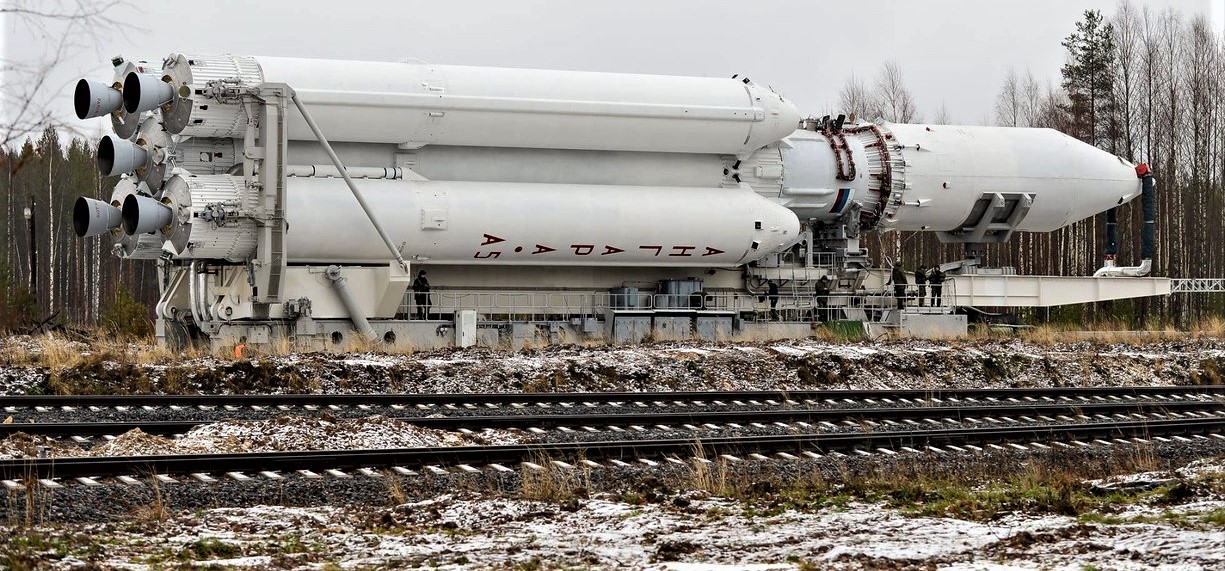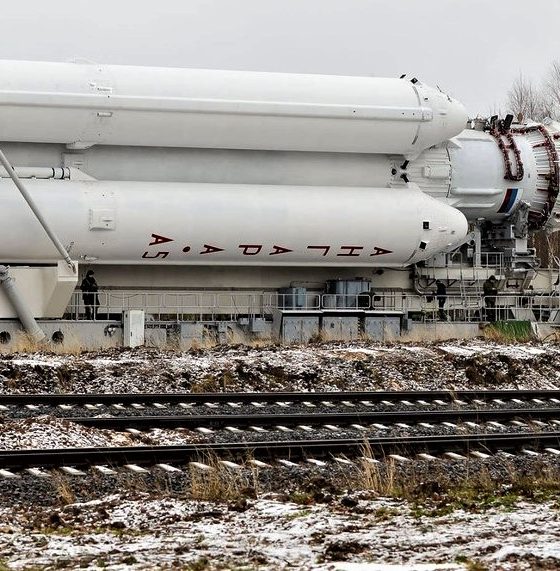

News
Russia quietly shelves development of sole SpaceX Falcon 9-competitive rocket
Russian space agency Roscosmos has indefinitely suspended development of the Proton Medium rocket, once expected to help the country compete with the meteoric rise of SpaceX and the growing field of interested entrants in the commercial launch industry.
As Russia makes a greater push toward Angara rockets, it is sidelining development of Proton Medium, a vehicle ILS hoped would compete head on with SpaceX's Falcon 9. https://t.co/BD6AOusalK
— Caleb Henry (@ChenrySpace) August 30, 2018
The (probable) death of a rocket
In an extraordinary feat of double-speak, freshly appointed Roscosmos director general Dmitry Rogozin – likely a primary source of Proton Medium’s paused development – explained that Russia’s national rocket program would likely experience the “financial collapse of [its] enterprise” if it chose to build “both old and new heavy-duty rockets” simultaneously. Rogozin clearly implied that Angara – a Russian rocket that has flown once (successfully) in 2014 and has a commercial demand about as close to near-zero as possible – was the “new” rocket that Roscosmos ought to solely pursue.
Indeed, upon analyzing the public specifications of Angara A5 and Proton Medium, the two rockets have near-identical theoretical performance characteristics, with higher geostationary transfer orbit payload capabilities (5-6 tons) roughly comparable to Falcon 9 in the SpaceX rocket’s drone ship recovery configuration. As a result, it certainly would make very little sense for Russia to fund and build two rockets with nearly indistinguishable utility – Rogozin certainly is correct in that regard.
However, the space agency director is dumbfoundingly off-base in his suggestion that Angara – not Proton Medium or other proposed alternatives – is the way forward to a financially sustainable Roscosmos. As he himself notes, “eternal state support [of launch vehicles] is impossible and inefficient,” seemingly indicating that he believes any viable state-funded rocket must eventually become a serious commercial competitor, a necessity for a launch vehicle if it’s to sustain itself beyond subsidies (i.e. guaranteed government launch contracts).
https://twitter.com/runnymonkey/status/1030356053882544129
The “old” versus the “new”
The Proton family of rockets – past and present – may not have the most reliable track record or a consistent launch cadence, but nearly any rocket on Earth can lay claim to a more storied launch career when placed next to Angara. Despite the fact that the Russian government itself has funded the development and production of Angara rockets, just a single orbital mission has been launched, and only with a mass simulator (dead weight) as its payload. Since that one-off 2014 launch debut, not even the Russian government itself has chosen to fly state satellites on Angara, instead siding with other successful vehicles in the country’s fleet, including Proton Breeze M and Soyuz-2.
This is almost without a doubt because Angara A5 is the most expensive rocket Russia currently operates, reportedly 30-40% more expensive than Proton M, estimated in 2017 by the US Government Accountability Office to cost roughly $65 million per launch. At roughly a third more than that, an Angara A5 launch presumably costs ~$90 million in a best-case scenario, given that the manufacturing apparatus required to construct the rocket has been maintained on a manifest of exactly zero launches since 2014. In fact, the vehicle was estimated by Russia itself to cost roughly $95 to $105 million per launch back in 2015.
https://twitter.com/runnymonkey/status/1032371653668261888
In an interview with SpaceNews in late 2017, the president of the commercial wing of Russia’s space launch program (known as ILS) frankly stated that “[ILS] needs to target something between $65 [million] and $55 million as the price point [for Proton Medium], and the Angara 5 vehicle will not be able to do that.” In the same interview, the ILS president even went so far as to imply that “Proton Medium was being designed as a purely commercial competitor to SpaceX’s Falcon 9.”
While there is a very slim chance that Proton Medium’s development will be revived after Roscosmos’ internal review, it’s far safer to presume that the vehicle is dead, thus killing Russia’s only tenuous hope of fielding a rocket capable of competing with the likes of SpaceX and Blue Origin. While Roscosmos’ goal is to make Angara (an entirely expendable rocket, might I add) more affordable, it anticipates that the rocket would become cost-competitive with Proton no earlier than 2025.
For prompt updates, on-the-ground perspectives, and unique glimpses of SpaceX’s rocket recovery fleet check out our brand new LaunchPad and LandingZone newsletters!

News
Tesla starts showing how FSD will change lives in Europe
Local officials tested the system on narrow country roads and were impressed by FSD’s smooth, human-like driving, with some calling the service a game-changer for everyday life in areas that are far from urban centers.

Tesla has launched Europe’s first public shuttle service using Full Self-Driving (Supervised) in the rural Eifelkreis Bitburg-Prüm region of Germany, demonstrating how the technology can restore independence and mobility for people who struggle with limited transport options.
Local officials tested the system on narrow country roads and were impressed by FSD’s smooth, human-like driving, with some calling the service a game-changer for everyday life in areas that are far from urban centers.
Officials see real impact on rural residents
Arzfeld Mayor Johannes Kuhl and District Administrator Andreas Kruppert personally tested the Tesla shuttle service. This allowed them to see just how well FSD navigated winding lanes and rural roads confidently. Kruppert said, “Autonomous driving sounds like science fiction to many, but we simply see here that it works totally well in rural regions too.” Kuhl, for his part, also noted that FSD “feels like a very experienced driver.”
The pilot complements the area’s “Citizen Bus” program, which provides on-demand rides for elderly residents who can no longer drive themselves. Tesla Europe shared a video of a demonstration of the service, highlighting how FSD gives people their freedom back, even in places where public transport is not as prevalent.
What the Ministry for Economic Affairs and Transport says
Rhineland-Palatinate’s Minister Daniela Schmitt supported the project, praising the collaboration that made this “first of its kind in Europe” possible. As per the ministry, the rural rollout for the service shows FSD’s potential beyond major cities, and it delivers tangible benefits like grocery runs, doctor visits, and social connections for isolated residents.
“Reliable and flexible mobility is especially vital in rural areas. With the launch of a shuttle service using self-driving vehicles (FSD supervised) by Tesla in the Eifelkreis Bitburg-Prüm, an innovative pilot project is now getting underway that complements local community bus services. It is the first project of its kind in Europe.
“The result is a real gain for rural mobility: greater accessibility, more flexibility and tangible benefits for everyday life. A strong signal for innovation, cooperation and future-oriented mobility beyond urban centers,” the ministry wrote in a LinkedIn post.
News
Tesla China quietly posts Robotaxi-related job listing
Tesla China is currently seeking a Low Voltage Electrical Engineer to work on circuit board design for the company’s autonomous vehicles.

Tesla has posted a new job listing in Shanghai explicitly tied to its Robotaxi program, fueling speculation that the company is preparing to launch its dedicated autonomous ride-hailing service in China.
As noted in the listing, Tesla China is currently seeking a Low Voltage Electrical Engineer to work on circuit board design for the company’s autonomous vehicles.
Robotaxi-specific role
The listing, which was shared on social media platform X by industry watcher @tslaming, suggested that Tesla China is looking to fill the role urgently. The job listing itself specifically mentions that the person hired for the role will be working on the Low Voltage Hardware team, which would design the circuit boards that would serve as the nervous system of the Robotaxi.
Key tasks for the role, as indicated in the job listing, include collaboration with PCB layout, firmware, mechanical, program management, and validation teams, among other responsibilities. The role is based in Shanghai.
China Robotaxi launch
China represents a massive potential market for robotaxis, with its dense urban centers and supportive policies in select cities. Tesla has limited permission to roll out FSD in the country, though despite this, its vehicles have been hailed as among the best in the market when it comes to autonomous features. So far, at least, it appears that China supports Tesla’s FSD and Robotaxi rollout.
This was hinted at in November, when Tesla brought the Cybercab to the 8th China International Import Expo (CIIE) in Shanghai, marking the first time that the autonomous two-seater was brought to the Asia-Pacific region. The vehicle, despite not having a release date in China, received a significant amount of interest among the event’s attendees.
Elon Musk
Elon Musk and Tesla AI Director share insights after empty driver seat Robotaxi rides
The executives’ unoccupied tests hint at the rapid progress of Tesla’s unsupervised Robotaxi efforts.

Tesla CEO Elon Musk and AI Director Ashok Elluswamy celebrated Christmas Eve by sharing personal experiences with Robotaxi vehicles that had no safety monitor or occupant in the driver’s seat. Musk described the system’s “perfect driving” around Austin, while Elluswamy posted video from the back seat, calling it “an amazing experience.”
The executives’ unoccupied tests hint at the rapid progress of Tesla’s unsupervised Robotaxi efforts.
Elon and Ashok’s firsthand Robotaxi insights
Prior to Musk and the Tesla AI Director’s posts, sightings of unmanned Teslas navigating public roads were widely shared on social media. One such vehicle was spotted in Austin, Texas, which Elon Musk acknowleged by stating that “Testing is underway with no occupants in the car.”
Based on his Christmas Eve post, Musk seemed to have tested an unmanned Tesla himself. “A Tesla with no safety monitor in the car and me sitting in the passenger seat took me all around Austin on Sunday with perfect driving,” Musk wrote in his post.
Elluswamy responded with a 2-minute video showing himself in the rear of an unmanned Tesla. The video featured the vehicle’s empty front seats, as well as its smooth handling through real-world traffic. He captioned his video with the words, “It’s an amazing experience!”
Towards Unsupervised operations
During an xAI Hackathon earlier this month, Elon Musk mentioned that Tesla owed be removing Safety Monitors from its Robotaxis in Austin in just three weeks. “Unsupervised is pretty much solved at this point. So there will be Tesla Robotaxis operating in Austin with no one in them. Not even anyone in the passenger seat in about three weeks,” he said. Musk echoed similar estimates at the 2025 Annual Shareholder Meeting and the Q3 2025 earnings call.
Considering the insights that were posted Musk and Elluswamy, it does appear that Tesla is working hard towards operating its Robotaxis with no safety monitors. This is quite impressive considering that the service was launched just earlier this year.








